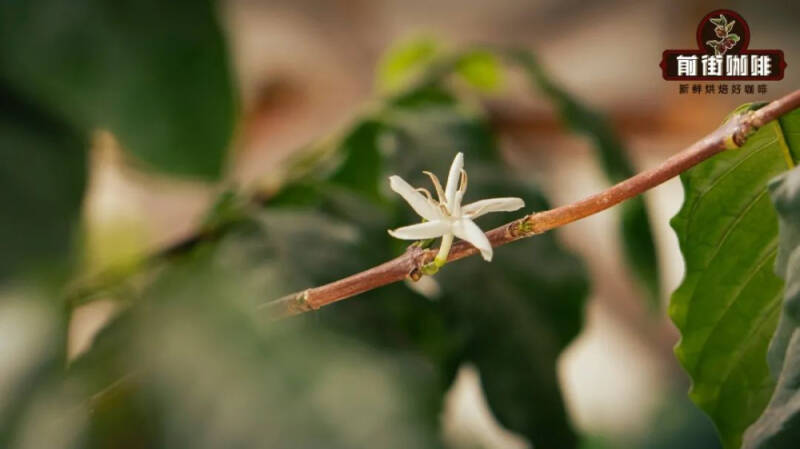Is Katim Arabica or Robsta? How did its "devil tail rhyme" come about? What are the characteristics of Katim?
As the two most commercially valuable coffee genera, Arabica and Robusta have their own advantages and disadvantages. For example, Arabica species have a good flavor, but most of them have weak disease resistance, while Robusta has strong disease resistance, but most of them have poor flavor. Before the 20th century, coffee cultivation in the world mainly revolved around Arabica. However, since the end of the 19th century, coffee berry disease and leaf rust broke out one after another, and Arabica, which was weakly resistant to the disease, collapsed one after another, resulting in the collapse of many coffee-producing countries. As a result, people began to study coffee varieties with disease resistance. And Katim is a brand-new product born in this era of rampant disease.
In 1957, the Leaf Rust Research Center (CIFC) in Portugal conducted more than a decade of mixed-race breeding. In the end, they selected three varieties with strong disease resistance and high yield (Tim) and distributed them to each country for variety improvement, numbered CIFC832/1, CIFC832/2, and CIFC1343. And one of the CIFC832/1, mixed with Kaddura, nurtured the protagonist of this article, Katim! "Catimor", as mentioned above, is a variety born from the cross between Caturra and Timor. Kaddura is a variant of Arabica's bourbon, while Tim is a hybrid of Robsta and Arabica, so Katim, who is 3/4 Arabica, is naturally classified as Arabica. It can be said that Katim's bean seed appearance perfectly inherits the respective characteristics of the male parent and the female parent. Kaddura beans are round and slender, while Tim is thick and big. Its two pregnant Katim is long, and thick and large, slightly tilted at both ends.

Not only that, Katim also inherited some of the advantages of the two genera, with good flavor and strong disease resistance. As a result, with the help of various diseases, Katim has spread greatly.
Katim plant characteristics the buds at the top of Katim's plant are emerald green, while the leaves of the whole coffee tree are dark green! Short internodes, many branches, wide adaptability, strong drought resistance, but also have a certain cold resistance.
It will be shorter than other traditional Arabica plants, but it has a strong growth capacity because of the shorter gaps between branch nodes and the ability to hatch more coffee fruit.
In addition, petite size is also a great advantage! Because it takes up less space, it can plant more coffee trees in the same environment. So the two characteristics of high yield and small size allow it to produce much more than conventional Arabica species.
Katim's flavor is due to the existence of Robusta gene, Katim can obtain higher disease resistance and breeding ability. But at the same time, the gene also has a negative effect on Katim's flavor. Although Arabica's blood gives Katim a good flavor, Robusta's genes provide a bad tail: it has a more obvious rustic flavor. Another point is that Katim's maturity time is shorter than the traditional Arabica species and cannot accumulate nutrients for a long time. Therefore, when the altitude is more than 1200 meters, the flavor of Katim at the same height is weaker than that of the traditional Arabica species.
Secondly, high yield will also hinder the formation of flavor, and high yield will lead to the dispersion of nutrients. It's like the same cake, cut into eight pieces and four pieces, eight pieces will be more than four pieces, but four pieces will be bigger. Therefore, when various factors are superimposed, the excellent flavor is diluted and Katim's bad tail rhyme is magnified at the same time, which finally leads to what Mr. Han Huaizong wrote in his book: "Devil tail Rhyme" (the tail rhyme is more complex, with a fishy smell). However, although the flavor will be weaker than other varieties, Katim still has a great demand. As mentioned at the beginning, many producing areas have been able to continue the coffee industry because of Katim. And these producing areas with Katim as the main planting variety are also making continuous progress. Through the continuous blending of Katim and Arabica species to dilute the gene of Luodou, and then to treat it in a more refined way, so that its flavor performance can be improved and the devil's tail rhyme can be weakened. Therefore, Qianjie believes that one day, Katim will shock our taste buds with excellent flavor performance, even if the waiting time is not too short.

(flowers from Katim planted at the gate of the front street)
-END-
Front Street Cafe
No. 10 Baoqian street, Yandun road, Dongshankou, Yuexiu district, Guangzhou, Guangdong province
Important Notice :
前街咖啡 FrontStreet Coffee has moved to new addredd:
FrontStreet Coffee Address: 315,Donghua East Road,GuangZhou
Tel:020 38364473
- Prev

"At Starbucks, I can have countless new names!"
▲ Click attention| Daily Boutique Coffee Culture Magazine Coffee Workshop asks for guests 'names and writes them on their packed cups. This is something Starbucks shop assistants will do when customers order, so that two drinks with the same requirements will not be confused, and guests can also collect the drinks by marking them on the cup after they are made. but in
- Next

How to correctly integrate pulling flowers? What details do I need to pay attention to when making a latte? What are the key points when drawing espresso?
Do you have such trouble when you often draw flowers? Although you have made a very beautiful draw flower pattern, the extra white traces around the pattern will always affect the overall beauty. I believe that most of my friends will already know the problem when they see it here. That is, the fusion is not well integrated, resulting in a low liquid level.
Related
- What effect does Italian American coffee with filter paper have? Will coffee taste better if it is put on filter paper at the bottom of the powder bowl?
- What is the color difference in coffee beans? What are the characteristics of honey processed coffee beans? Why are the anaerobically treated coffee beans uneven in color?
- How does novice Xiaobai quickly get started and make coffee? Newbies learn to make coffee by hand and share the specific steps and process process!
- Costa tea has a shelf life of 100 years?! Expert: Unable to verify
- It's a huge uproar! American milk addition was rejected by Manner employees?!
- Mocha pot coffee bean recommendations| How fine and how much powder should be used for grinding? What parameter ratios do I need to use to make milk with Mocha pot coffee?
- What are the characteristics of the world's top ten coffee beans treated with Costa Rica honey? How to make black honey kadura from Tarazhu Pilon Processing Plant taste good?
- How to make deep-roasted coffee? What grinding water temperature does authentic Jamaica Blue Mountain No. 1 coffee use to brew it well?
- Selected high-grade rose summer coffee flavor tasting guide Why Panama rose summer has the aroma of flowers and fruits
- What equipment does a novice Xiaobai need to buy to learn to make coffee? Filter cup electronic scale bean grinder manual flushing pot purchase guide

